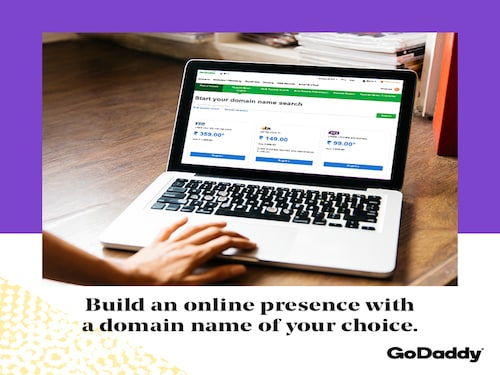Buying the right domain: Make your first step online count



You’ve thought long and hard about your business idea and finally decided to take the plunge. You’ve figured out partners, managed the seed money, and even worked out a name for your venture. How long after this do you think about giving your business a website?
In today’s hyper-connected world, the first point of search for any product or service is online. Wholesale or retail, commoditised or unique, local or not, if you have something to sell, chances are your customers will use search engines, online yellow pages, trade portals, or other such aggregators to search for it. Having a website, instead of only social media accounts or trade listings, greatly increases your chances of being contacted. Because, having found your listing or post, customers would want to know more about your business and if you don’t have a website, they will probably lose interest. According to a May 2019 study, only 8% consumers don’t look at the website of a local business they wish to use!
Now, you might ask, what is the ideal time to think of setting up a website for your business? Well, it should start as soon as you start thinking of a name for your business. The Internet is a crowded place today, and the name of your website, or its domain name, can make or break your success in the online marketplace. Before you finalise your business’ name and spend on branding and design, make sure the same name works well online too.
The domain of your website is, quite literally, its address on the Internet. And like real estate in the physical world, you need to first check if the address you want is available. Domain registrars, like GoDaddy, are like real estate brokers who help you search for and buy the domain you want. When choosing a domain registrar to work with, ensure that they:
Once you have a domain name in mind, you will need to check its availability using the domain registrar’s database. If you’re using GoDaddy, you will find a search bar for domain names right at the top of the website home page. Simply type in the domain name that you want and check its availability.
Before you do this though, put your domain name through what is called the ‘radio’ test. If your customers heard about your website on a 10-second radio jingle, will they be able to visit it successfully? They will, if the domain name you have selected is:
The domain extension, also known as Top Level Domain or TLD technically, is the final part of your domain name. While .com domains are the most commonly used domains, they are also now the most expensive ones. Select a domain name extension that is most suitable for your type of business and audience. For example, for an India-focused business, .in, or .co.in domain extension makes sense, whereas if your business is India-based, but targets a global audience, it might be better for you to buy a .com domain.
What if the domain name you really want is not available? If the available alternatives don’t work for you, the domain resale market is your next best option. Search for your preferred domain on GoDaddy Auctions, a resellers market that lists domain names whose registration has expired, or ‘investor’ owned domain names that are now being resold.
Once you find the perfect domain name for your business, there is a final checklist you must run through to avoid any expensive mistakes:
Attributed to Nikhil Arora, Vice President and Managing Director, GoDaddy India
Disclaimer: The pages slugged ‘Brand Connect’ are equivalent to advertisements and are not written and produced by Forbes India journalists.
First Published: Oct 01, 2019, 05:31
Subscribe Now